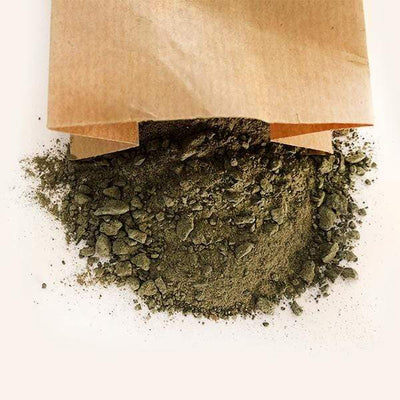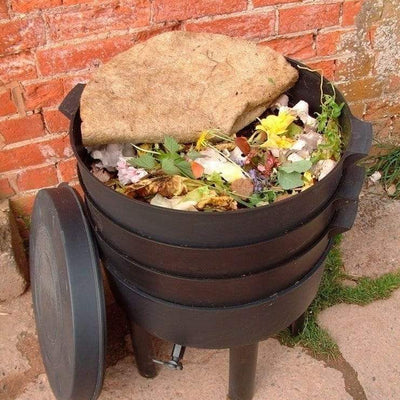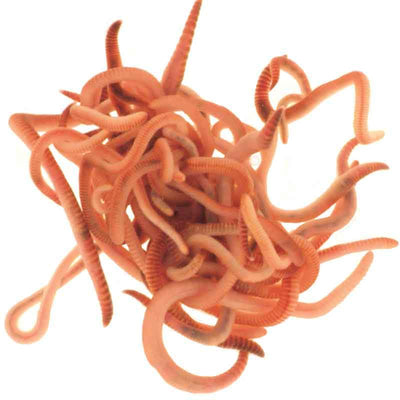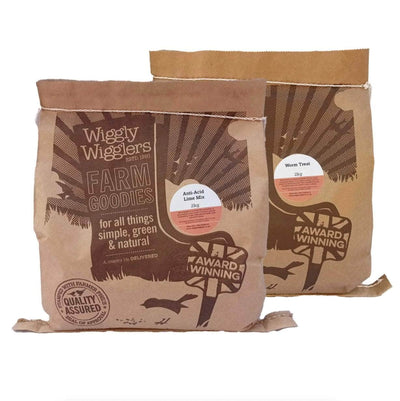We were really pleased that Victoria Maw from the FT took the time to test a Bokashi Kit from us and write about it in the Financial Times this weekend. I thought I would share it with you as if you haven’t yet thought of using Bokashi Bran on your Food Waste it’s definitely a good time to start.
It’s madness sending this resource to landfill or to aerobically digest (or centrally compost) when for a few £’s a year you can deal with it at home and at the same time improve your soil health and the biodiversity of your garden.
The FT makes a few key points: “Bokashi retains 99% of the carbon, so you can have more to put back into the soil and ultimately feed more energy”

Our kits will easily deal with several kilos of waste a week so will easily cope with an average household of 4-6 people.
Once you have filled the first bucket it takes about 2 weeks to ferment (but you can leave it much longer if it takes longer to fill bucket two). Once done you can either add the finished product to your conventional compost heap or bin and it will be brilliant to activate that process or you can add it to your soil. The liquid makes a useful fertiliser too
It’s madness sending this resource to landfill or to aerobically digest (or centrally compost) when for a few £’s a year you can deal with it at home and at the same time improve your soil health and the biodiversity of your garden.
The FT makes a few key points: “Bokashi retains 99% of the carbon, so you can have more to put back into the soil and ultimately feed more energy”
According to WRAP (Waste & Resources Action Programme) in the UK, the average person generates over 75 kilos of food waste annually, costing local authorities around £1000 per household.

Using Bokashi Bran and fermenting your kitchen waste can eliminate this waste by taking the whole lot out of the waste stream and saving all these costs and delivering soil health and biodiversity. offers a solution. Here's how:
- Efficient Decomposition: Bokashi Bran quickly breaks down kitchen waste through fermentation, reducing odour and volume.
- Versatile: It can handle various types of food waste, including cooked foods and meat, making it suitable for all households.
- Space-Saving: Bokashi composting systems are compact and ideal for homes with limited space.
- Nutrient-rich soil: The fermented waste enriches soil with beneficial microorganisms and nutrients, promoting plant growth.
- Reduced Methane Emissions: By diverting waste from landfills, Bokashi Bran helps mitigate climate change.
- Cost Savings: It lowers waste management costs for both households and local authorities.

So, what do you need to do?
The easiest system is to buy a Bokashi Kit with our own farm-made Bokashi Bran inside. Setting up a Bokashi Kit is simple and effective. A Bokashi Kit consists of two bins: one for collecting kitchen waste and another for fermentation and then you swap them around. The bins often have taps for draining excess liquid, which can be used as a nutrient-rich fertiliser. To set up, place a layer of Bokashi Bran at the bottom of the fermentation bin. Then, add food scraps in layers, sprinkling Bokashi Bran over each layer. Press down firmly to remove air pockets and seal the lid tightly after each use to create an anaerobic environment. Repeat this process until the bin is full, draining excess liquid as needed. The Bokashi Kit will effectively ferment the waste, turning it into nutrient-rich compost for your plants.
Our kits will easily deal with several kilos of waste a week so will easily cope with an average household of 4-6 people.
Once you have filled the first bucket it takes about 2 weeks to ferment (but you can leave it much longer if it takes longer to fill bucket two). Once done you can either add the finished product to your conventional compost heap or bin and it will be brilliant to activate that process or you can add it to your soil. The liquid makes a useful fertiliser too






